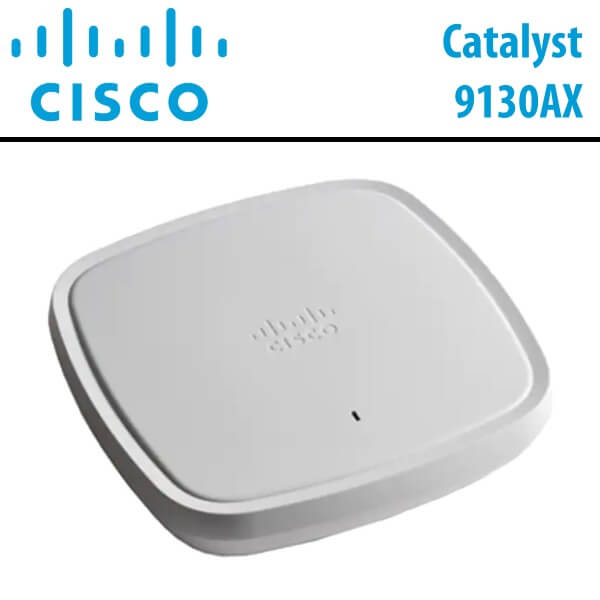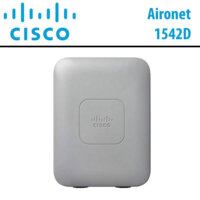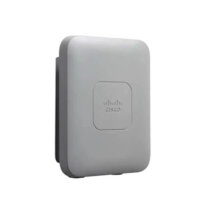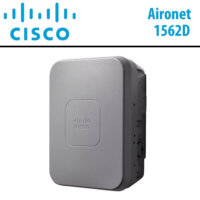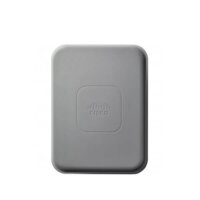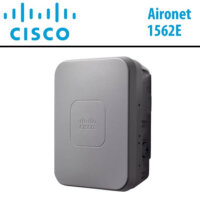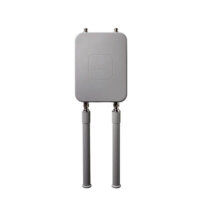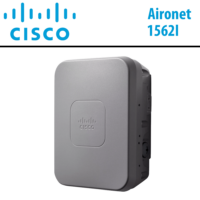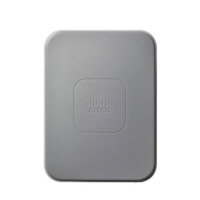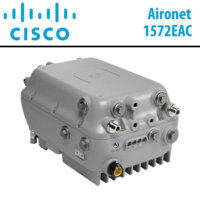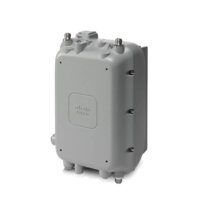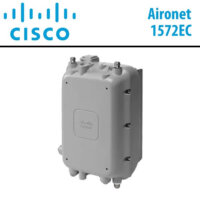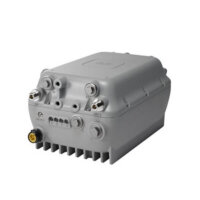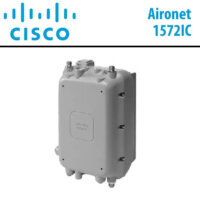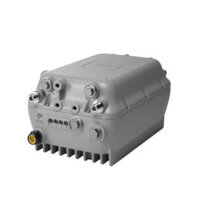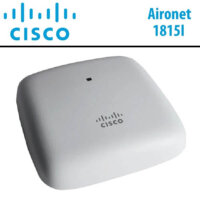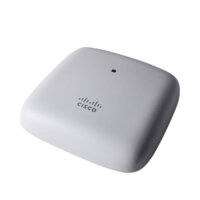Description
Cisco Catalyst9130AX Dubai
The Cisco Catalyst9130AX Dubai Series Access Points deliver a seamless experience for everyone, everywhere, exhibiting high scaling and unparalleled performance across diverse network deployments. Surpassing the Wi-Fi 6 (802.11ax) standard, the 9130AX Series not only provides integrated security, resiliency, and operational flexibility but also enhances network intelligence.
Aligned with Cisco’s intent-based network and suitable for networks of all sizes, the Cisco Catalyst9130AX Dubai scales to accommodate the expanding demands of IoT while fully embracing the latest innovations and technologies. As a leader in performance, security, and analytics, the 9130AX Series stands out.
Paired with the Cisco Digital Network Architecture (Cisco DNA), the Cisco Catalyst9130AX Dubai Access Points serve as enterprise-class solutions addressing both current and future needs. Representing the initial phase in network updates, they empower you to maximize the features and benefits offered by Wi-Fi 6.
The Cisco Catalyst9130AX Dubai Access Points support both Orthogonal Frequency-Division Multiple Access (OFDMA) and Multiuser Multiple Input, Multiple Output (MU-MIMO), ensuring more predictable performance for advanced applications and IoT. Furthermore, with speeds of up to 5 Gbps and NBASE-T and IEEE 802.3bz Ethernet compatibility, the 9130 Series seamlessly offloads network traffic without encountering bottlenecks.
Key features :
- Wi-Fi 6 certified, supporting 802.11ax on both 2.4GHz and 5GHz bands
- Up to four Wi-Fi radios : 5GHz flexible radio (single 8×8 or dual 4×4), 2.4GHz (4×4) and Cisco RF ASIC
- OFDMA and MU-MIMO
- Multigigabit support
- Internal and external antenna
- Embedded Wireless Controller
- Cisco Flexible Radio Assignment and Cisco CleanAir Technology
- Four radios : 2.4 GHz (4×4), 5 GHz (8×8 and 4×4), Cisco RF ASIC, and BLE/IoT
Technical Details
| Software
|
Catalyst 9130AXI
- Cisco Unified Wireless Network Software Release 8.10.x or later
- Cisco IOS XE Software Release 16.12.1 with AP Device Pack, or later
|
| Supported wireless LAN controllers
|
- Cisco Catalyst 9800 Series Wireless Controllers
- Cisco 3504, 5520, and 8540 Wireless Controllers and Cisco Virtual Wireless Controller
|
| 802.11n version 2.0 (and related) capabilities
|
- 4×4 MIMO with four spatial streams
- Maximal Ratio Combining (MRC)
- 802.11n and 802.11a/g
- 20- and 40-MHz channels
- PHY data rates up to 1.5 Gbps (40 MHz with 5 GHz and 20 MHz with 2.4 GHz)
- Packet aggregation : Aggregate MAC Protocol Data Unit (A-MPDU) (transmit and receive), Aggregate MAC Service Data Unit (A-MSDU) (transmit and receive)
- 802.11 Dynamic Frequency Selection (DFS)
- Cyclic Shift Diversity (CSD) support
|
| 802.11ac
|
- 8×8 downlink MU-MIMO with eight spatial streams
- MRC
- 802.11ac beamforming
- 20-, 40-, 80-, and 160-MHz channels
- PHY data rates up to 6.9 Gbps (160 MHz with 5 GHz)
- Packet aggregation : A-MPDU (transmit and receive), A-MSDU (transmit and receive)
- 802.11 DFS
- CSD support
- WPA3 support
|
| 802.11ax
|
- 8×8 uplink/downlink MU-MIMO with eight spatial streams
- Uplink/downlink OFDMA
- TWT
- BSS coloring
- MRC
- 802.11ax beamforming
- 20-, 40-, 80-, and 160-MHz channels
- PHY data rates up to 10 Gbps (160 MHz with 5 GHz and 20 MHz with 2.4 GHz)
- Packet aggregation : A-MPDU (transmit and receive), A-MSDU (transmit and receive)
- 802.11 DFS
- CSD support
- WPA3 support
|
| Integrated antenna
|
2.4 GHz : Peak gain 4 dBi, internal antenna, omnidirectional in azimuth
5 GHz : Peak gain 6 dBi, internal antenna, omnidirectional in azimuth |
| External antenna with Smart antenna connector
|
- The Cisco Catalyst 9130AXE Access Point is certified for use with antenna gains up to 13 dBi (2.4 GHz and 5 GHz)
- Cisco offers the industry’s broadest selection of antennas, delivering optimal coverage for a variety of deployment scenarios
- Supports Self-Identifiable Antennas (SIA) on the Smart antenna connector
- Smart antenna connector is a compact multi-RF connector with 8-DART interface
- Requires the AIR-CAB002-D8-R= 2-fppt smart antenna connector when used with antennas with a RP-TNC connector
- Requires the AIR-CAB003-D8-N= 3 ft smart antenna connector when used with AIR-ANT2513P4M-N= antenna
|
| Interfaces
|
- 1x 100, 1000, 2500, 5000 Multigigabit Ethernet (RJ-45) – IEEE 802.3bz
- Management console port (RJ-45)
- USB 2.0 at 4.5W (enabled via future software)
|
| Indicators
|
Status LED indicates boot loader status, association status, operating status, boot loader warnings, and boot loader errors |
| Dimensions (W x L x H)
|
Access point (without mounting brackets) :
C9130AXI : 8.9 x 8.9 x 1.88 in. (22.6 x 22.6 x 4.8 cm) |
| Environmental
|
Cisco Catalyst 9130AXI
- Non-operating (storage) temperature : -22° to 158°F (-30° to 70°C)
- Non-operating (storage) altitude test : 25˚C, 15,000 ft (4600 m)
- Operating temperature : 32° to 122°F (0° to 50°C)
- Operating humidity : 10% to 90% (noncondensing)
- Operating altitude test : 40˚C, 9843 ft (3000 m)
Note : When the ambient operating temperature exceeds 40°C, the access point will shift from 8×8 to 4×4 on the 5 GHz radio, uplink Ethernet will downgrade to 1 Gigabit Ethernet; however, the USB interface will remain enabled. |
| System memory
|
- 2048 MB DRAM
- 1024 MB flash
|
| Warranty |
Limited lifetime hardware warranty |
| Available transmit power settings
|
2.4 GHz
- 23 dBm (200 mW)
- 20 dBm (100 mW)
- 17 dBm (50 mW)
- 14 dBm (25 mW)
- 11 dBm (12.5 mW)
- 8 dBm (6.25 mW)
- 5 dBm (3.13 mW)
- 2 dBm (1.56 mW)
- -1 dBm (0.79 mW)
- -4 dBm(0.39 mW)
5 GHz
- 26 dBm (400 mW)
- 23 dBm (200 mW)
- 20 dBm (100 mW)
- 17 dBm (50 mW)
- 14 dBm (25 mW)
- 11 dBm (12.5 mW)
- 8 dBm (6.25 mW)
- 5 dBm (3.13 mW)
- 2 dBm (1.56 mW)
- -1 dBm (0.79 mW)
|
| Maximum number of nonoverlapping channels
|
2.4 GHz
- 802.11b/g :
- 802.11n :
- 802.11ax :
5 GHz
- 802.11a :
- 802.11n :
- 20 MHz : 26 FCC, 16 EU
- 40 MHz : 12 FCC, 7 EU
- 802.11ac/ax :
- 20 MHz : 26 FCC, 16 EU
- 40 MHz : 12 FCC, 7 EU
- 80 MHz : 5 FCC, 3 EU
- 160 MHz 2 FCC, 1 EU
Note : This varies by regulatory domain. Refer to the product documentation for specific details for each regulatory domain. |
| Compliance standards |
Safety :
- IEC 60950-1
- EN 60950-1
- UL 60950-1
- CAN/CSA-C22.2 No. 60950-1
- AS/NZS60950.1
- UL 2043
- Class III equipment
Emissions :
- CISPR 32 (rev. 2015)
- EN 55032 (rev. 2012/AC :2013)
- EN 55032 (rev. 2015)
- EN61000-3-2 (rev. 2014)
- EN61000-3-3 (rev. 2013)
- KN61000-3-2
- KN61000-3-3
- AS/NZS CISPR 32 Class B (rev. 2015)
- 47 CFR FCC Part 15B
- ICES-003 (rev. 2016 Issue 6, Class B)
- VCCI-CISPR 32
- CNS (rev. 13438)
- KN-32
- QCVN 118 :2018/BTTTT
Immunity :
- CISPR 24 (rev. 2010)
- EN 55024 + AMD 1(rev. 2010)
- EN 55035 : 2017
- KN35
Emissions and immunity :
- EN 301 489-1 (v2.1.1 2017-02)
- EN 301 489-17 (v3.1.1 2017-02)
- QCVN (18 :2014)
- QCVN 112 :2017/BTTTT
- KN 489-1
- KN 489-17
- EN 60601-1-2 :2015
- EN 61000-6-1 : 2007
Radio :
- EN 300 328 (v2.1.1)
- EN 301 893 (v2.1.1)
- AS/NZS 4268 (rev. 2017)
- 47 CFR FCC Part 15C, 15.247, 15.407
- RSP-100
- RSS-GEN
- RSS-247
- China regulations SRRC
- LP0002 (rev 2018.1.10)
- Japan Std. 33a, Std. 66, and Std. 71
RF safety :
- EN 50385 (rev. Aug 2002)
- ARPANSA
- AS/NZS 2772 (rev. 2016)
- EN 62209-1 (rev. 2016)
- EN 62209-2 (rev. 2010)
- 47 CFR Part 1.1310 and 2.1091
- RSS-102
IEEE standards :
- IEEE 802.3
- IEEE 802.3ab
- IEEE 802.3af/at
- IEEE 802.11a/b/g/n/ac/ax
- IEEE 802.11h, 802.11d
Security :
- 802.11i, Wi-Fi Protected Access 2 (WPA2), WPA3
- 802.1X
- Advanced Encryption Standard (AES)
Extensible Authentication Protocol (EAP) types :
- EAP-Transport Layer Security (TLS)
- EAP-Tunneled TLS (TTLS) or Microsoft Challenge Handshake Authentication Protocol (MSCHAP) v2
- Protected EAP (PEAP) v0 or EAP-MSCHAP v2
- EAP-Flexible Authentication via Secure Tunneling (EAP-FAST)
- PEAP v1 or EAP-Generic Token Card (GTC)
- EAP-Subscriber Identity Module (SIM)
|
